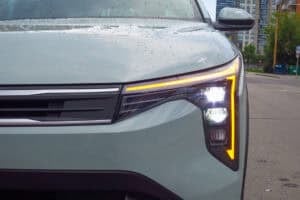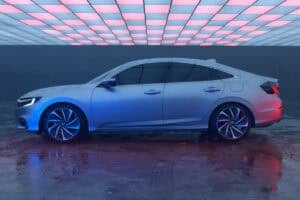Although the entire automotive industry is now transitioning to electric propulsion, Tesla, a pioneer in the matter, remains well ahead of the pack. Not only did Elon Musk’s car company break yet another sales record in 2022, it brought a slew of subtle, yet substantial improvements to its popular Model 3 compact sedan. We took the car out for a drive through a winter blizzard to see how it performs.
Same Car With New Heart, New Specs, and All-New Battery

The Model 3 you see in these pictures may seem identical to, well, all the other Tesla Model 3’s you’ve seen on the road since the car first arrived in 2018, but it now houses an all-new battery. It’s a big deal, as it utilizes LFP (lithium ferro-phosphate or lithium iron phosphate) technology, making it the first mass-production electric vehicle to be powered by such a battery.
The 2023 Tesla Model 3 may be a controversial electric car, but it’s also still the one to beat.
The goal? To illuminate the lithium-ion battery’s dependence on rare and highly controversial metals such as cobalt and nickel, but also to allow it to be recycled a lot easier. LFP batteries also yield more endurance, allowing them to regularly be charged to 100% without showing signs of early degradation.
Improved Range with the Updated Battery
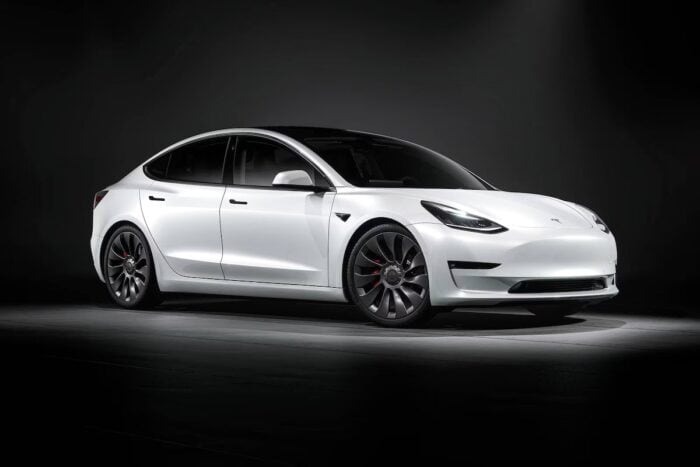
| Model | Drivetrain | Range (EPA Estimated) |
|---|---|---|
| Tesla Model 3 Standard Range | Rear-Wheel Drive (RWD) | 272 miles |
| Tesla Model 3 Long Range | Dual Motor All-Wheel Drive | 333 miles |
| Tesla Model 3 Performance | Dual Motor All-Wheel Drive | 315 miles |
On the flip side, LFP batteries are less energy-dense than conventional cobalt or nickel-based types. This means that for the same size, they typically deploy less power. To remedy this, Tesla raised the Model 3’s usable battery capacity from 53 to 60 kWh but also did what it does best: good old software engineering to mitigate the loss of range.
The result is, believe it or not, even more range than before, climbing from 253 miles to 272 miles, or 407 to 438 km. The rest of the car’s specifications remain relatively the same, with a single, real-mounted motor that churns out 271 horsepower and 310 lb-ft of torque.
A Major Price Reduction Across North America
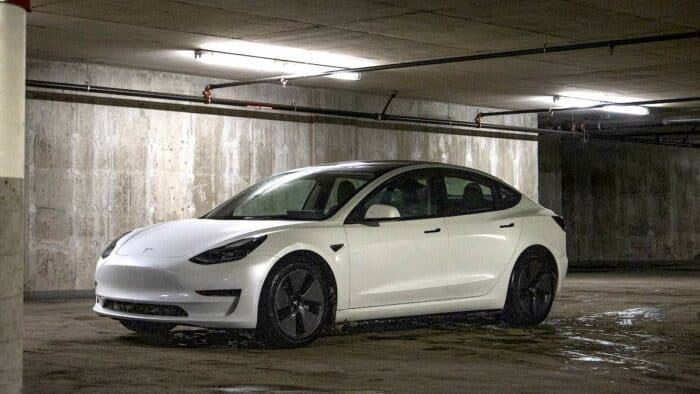
For the 2023 model year, Tesla carried over these technical changes but also slashed the price of its popular sedan.
In the US, the entry-level Model 3 RWD goes from $46,990 to $43,990—that’s a $3,000 price reduction. But this good news may come with a catch: because the updated model uses the LFP battery from CATL, the $7,500 tax credit may no longer qualify after March 2023 for the Model 3 RWD.
In Canada, the entry price is now down $5,000, from $59,990 CAN to $54,990 before options. In Canada, this means the Model 3 is eligible to the federal $5,000 rebate for electric cars. If you happen to live in a heavily subsidized province like Quebec, you’ll get a full $12,000 off your Model 3.
Tesla has slashed prices across the entire lineup, including the larger, mid-size Model S sedan we compare to the Model 3.
Still the Queen of Efficiency, Even in Winter
It’s a proven fact that electric vehicles lose anywhere between 30 to 50% of their range in cold weather due to a battery that has more difficulty operating effectively and the necessity to keep the car’s cabin warm.
Knowing that, we had to prepare our Model 3 before we ventured out on a 250 km (about 155 miles) round trip through a tough Canadian blizzard. While connected to a 240-volt level 2 home charger, we made sure to preheat the Model 3’s battery and cabin to ensure optimal range. We did that using Tesla’s user-friendly mobile app. When we strapped ourselves inside its futuristic, yet highly minimalist cabin, the car told us we had just over 300 km (186 miles) of available range.
2023 Tesla Model 3 Interior

Sitting inside a Model 3 is still just as strange as when it first hit our market five years ago. There’s no actual dashboard, but a large tablet protruding from the middle. That’s where everything is controlled on the car, from headlights, to mirror adjustments and even climate control.
Although we do wish the Model 3 did retain some physical buttons for some basic controls, there’s no denying how easy this system is to operate. It’s quick to react, the graphic quality is superb, and it hosts a wide array of neat features as it updates itself remotely. You don’t need Android Auto or Apple CarPlay in a Tesla. You simply connect your phone, and the car hands you over the apps you need.
Better interior build quality, but still room for improvement
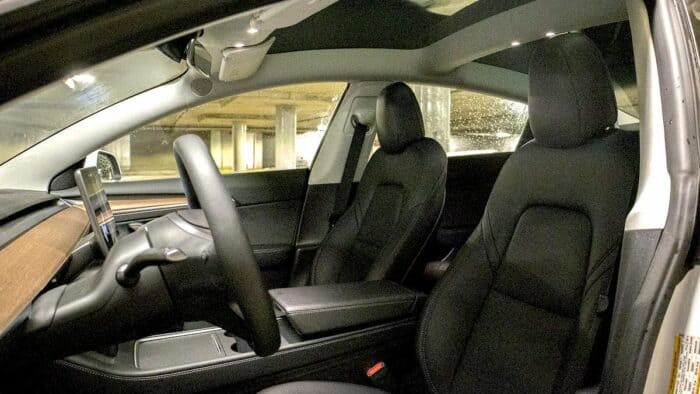
This seamlessness is what allows the Model 3 to really distinguish itself from other electric cars. Its seats are incredibly comfortable, forward visibility is superb thanks to a low windshield and the entire car feels as if it’s enveloped around you. That all being said, while Tesla did considerably improve build quality, we did notice some shady fit and finish here and there. We also found rear visibility to be horrible due to the car’s high beltline.
The changes and upgrades to the 2024 Model 3 are even greater, especially to the interior gaining a new 8-inch rear passenger screen and new wireless phone charging pads.
Driving Impressions & Performance
Even in the snow, the Model 3’s level of traction is more than enough for any driver’s needs. Yes, the fact that it’s rear-wheel drive will require you to be a bit more patient when accelerating from a stoplight, but once its witty traction management system figures things out, you’ll be out of the hole in a jiffy.
There’s a sense that someone at Tesla understands chassis tuning as this thing knows how to take on a corner. The last time we felt something this well sorted out was in a BMW 3 Series.
The Model 3 is a stable sedan, at any speed, with smooth operation and a vault-quite ride. Although we did find some wind noise coming in from the driver’s side window to be somewhat irritating, another sign of Tesla’s inconsistent build quality. We also find its suspension damping to be way too stiff.
On the road, this sport sedan is quick, and its steering wheel is small and precise. Furthermore, there’s a sense that someone at Tesla understands chassis tuning as this thing knows how to take on a corner. The last time we felt something this well sorted out was in a BMW 3 Series.
An EV that’ll take on winter
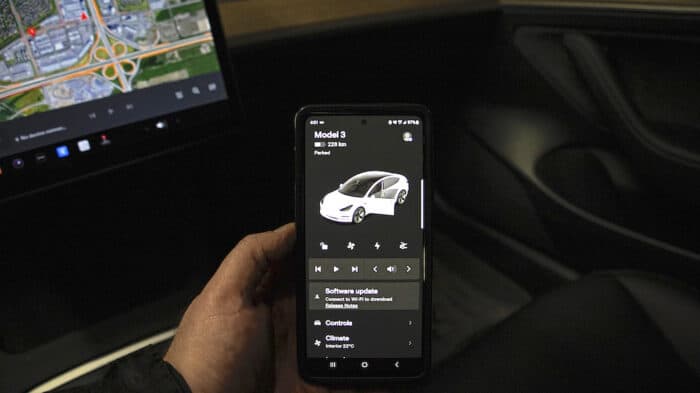
But while we did allow ourselves to have a bit of fun with the car, the Model 3 proved highly efficient at managing its energy. At temperatures of -8 degrees Celsius (just under 18 degrees Fahrenheit), it averaged 20.3 kWh/100 km with the heater and defrosters turned on full blast. This translates to a real-world range of 295 kilometers (around 183 miles). We’ve never driven an electric car that’s this efficient in the cold.
Takeaway: Is This Compact EV Sedan Still Worth Buying?
The 2023 Tesla Model 3 may be a controversial electric car, but it’s also still the one to beat. It’s fun to drive, properly quick and incredibly efficient. We’ll add that no other car currently manages to convey such a unique ownership experience.
With a pricing strategy that’s now much more aggressive than before, it’s fair to say that we’ll be seeing a lot more Model 3s driving on public roads this year. Shopping for an EV? Check out all our electric car and SUV reviews.


